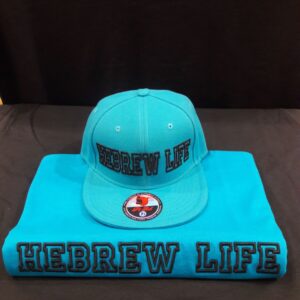70 A.D. Set
$95.00
A.D. 70 Titus Destroyed Jerusalem. The temple was destroyed and no stone was left unturned, as was prophesied by Yahusha. Over one million Hebrews were killed and about 95,000 were taken into captivity in Caesarea while the some fled to North Africa in hopes of escaping Roman persecution and Roman enslavement. A large majority of Hebrews migrated into Western Africa/Sudan and along the Western Coast of Africa and remained there for over fifteen hundred years (70 AD – 1619 AD). Most of the cultures throughout Western Africa today exist because of the Hebrew influence. The countries below and the information are based on older maps which are more accurate than the ones that we currently are taught from today.
- Guinea- Known as the Gold Coast, because there was a substantial amount of gold found in the soil. They also had a significant number of Hebrews. This includes present day NIGERIA. The word Igbo (Ibo (Hebrew)) which is one of the many tribes.
- Benin- where the Kingdom of Judah is located on the older maps.
- Cameroon- Biafra
- Songhay- this was the city of Timbuktu, was revered for their education and commerce. Majority of the native people were Hebrew
- Ghana- the Hebrews were known as the Ashantee
We must not forget about East Africa since we are on the topic of migration and the diaspora. A vast amount of Israelites entered into the East African regions long before the Roman subjugation of Jerusalem in 70 AD. There was more than one migration of Israelites into lands that were not their own. The Israelites are great in number, this has caused confusion and a large amount of people have misidentified them as being Hamitic but they are not, they are Sematic. Researchers, archeologists and scientists are now realizing that the history of Israelites in East Africa can be proven just like their West African Israelite relatives.
Golden Nugget: Keep in mind that the Hebrew Israelites and the Israelites are a Sematic people. Semites came from Shem, one of Noah’s 3 sons who existed before Abraham, the first Hebrew. The Most High has always given instructions and boundaries to his creation. Noah and his family were instructed to offer a sacrifice after the flood. They were told what to eat and how to eat it.
Bere’shiyth (Genesis) 8:20, And Noach (Noah) built an altar unto YAHUAH; and took of every clean beast, and of every clean foul, and offered burnt offerings on the altar.
9:3 Every moving thing that lives shall be meat for you; even as the green herb have I given you all things. 4 But flesh with the life thereof, which is blood thereof, shall ye not eat.
The covenant with Noah regarding food was different from the Mosaic Covenant regarding food:
Vayiqra (Leviticus) 11:1-47 speaks in detail regarding what TMH permitted the Israelites to eat and what He did not permit them to eat.
What does the Golden Nugget mean? It means that the Sematic people before Abraham and Moses had an understanding of sacrifice and eating within the parameters given by TMH even if later it changed. The seed of Shem, Ham and Japheth migrated to different areas of the globe before Abram’s name was changed to Abraham. So we can conclude that they took these cultural characteristics with them out of the land 1st called Sumer later called Babylon and into the lands in which they inhabited. We must also remember that their was a mixing of false religions and idol worship spear headed by Nimrod and Semiramis. Nimrod was the 1st sun god and Semiramis was the 1st moon goddess and of course we can see them in other civilizations. Same people being worshiped, same gods, but different country and different culture. This mix included but not limited to sacrifice (human) and eating things with blood which was forbidden by TMH.
This post was inspired by “Never Forget 70 A.D;” however we cannot talk about the diaspora without making sure that all who read have a clear understanding that the Sematic people were inhabiting other parts of the world before 70 A.D.
.
| Shirt Color | Black, Purple |
|---|---|
| Shirt Size | 1X, 2X, 3X, 4X, 5X, Large, Medium, Small |
Related products
-
Ahch
We the People of the Book Set – (Hebrew Nation Building) Edition
Rated 0 out of 5$110.00 Select options





